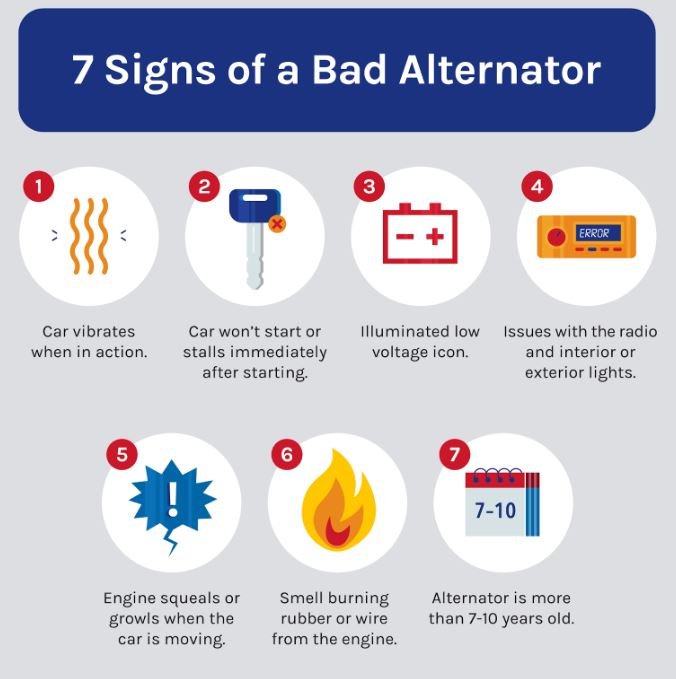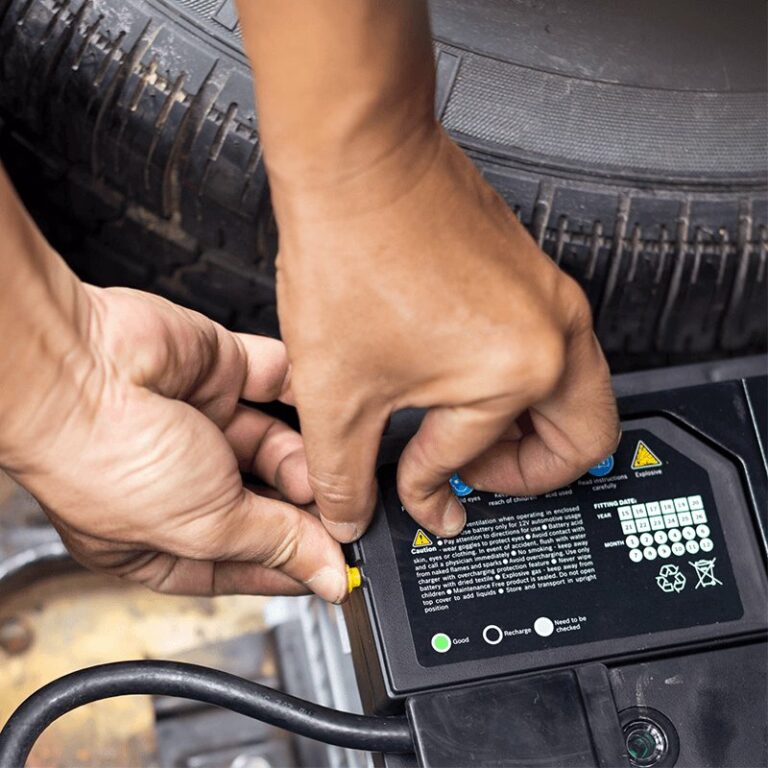How to Diagnose a Faulty Car Battery – A Comprehensive Guide
Is your car acting up lately? Trouble starting, dimming lights, or strange electrical issues? It could be a faulty car battery causing all the trouble. But don’t fret, diagnosing the problem is easier than you think. In this article, we’ll guide you through the steps to identify if your car battery is the culprit behind your vehicle’s woes. By following our simple yet effective techniques, you’ll be able to determine if it’s time to replace that tired old battery. So, let’s dive in and find out how to diagnose a faulty car battery!
How to Diagnose a Faulty Car Battery?
Checking for Common Symptoms:
When your car battery starts to fail, it can manifest in a variety of ways. By paying attention to these common symptoms, you can diagnose if your car battery is faulty:
1. Dim Lights and Electrical Issues
One of the most noticeable signs of a faulty car battery is dim lights. If you notice that your headlights or interior lights appear dimmer than usual, or if your dashboard lights flicker, it could indicate a battery problem. Additionally, you may experience issues with electronic components such as power windows or the radio.
2. Slow Engine Crank
If you turn the key in the ignition and the engine cranks slowly, it may be a sign of a weak battery. The engine needs a sufficient amount of power from the battery to start, and a faulty battery may struggle to deliver that power.
3. Clicking Sound When Starting
When you try to start your car and hear a rapid clicking sound instead of the engine turning over, it often indicates a weak battery. The clicking noise is typically caused by the starter relay engaging but not receiving enough power to start the engine.
Performing a Visual Inspection:
1. Checking for Corrosion
Corrosion around the battery terminals is a common issue that can affect the battery’s performance. Open the hood and carefully examine the battery terminals for any signs of a white, powdery substance. If you notice corrosion, it’s important to clean the terminals before further testing.
2. Inspecting Battery Casing
Take a close look at the battery casing for any visible damage, such as cracks or bulges. Damaged casing can lead to leaks, which compromise the battery’s ability to hold a charge.
Testing Battery Voltage:
1. Using a Multimeter
A multimeter is a handy tool for testing the voltage of your car battery. Set the multimeter to the DC voltage range and connect the positive and negative leads to the corresponding battery terminals. A fully charged battery should read around 12.6 volts. If the reading is significantly lower, it indicates a weak or discharged battery.
2. Load Testing
While a multimeter can measure the battery voltage, it doesn’t provide a complete picture of the battery’s health. Load testing simulates real-world conditions and assesses the battery’s ability to deliver power. You can perform a load test using a dedicated battery tester or visit a local auto parts store for assistance.
Checking Alternator Functionality:
A faulty alternator can sometimes mimic the symptoms of a faulty battery. To confirm if the battery is the culprit or if the alternator is causing the issue, follow these steps:
1. Testing Alternator Output
Start the engine and use a multimeter to measure the voltage across the battery terminals. A properly functioning alternator should provide a reading between 13.8 to 14.8 volts. If the voltage is significantly higher or lower, it may indicate an issue with the alternator.
2. Load Testing the Alternator
In addition to checking the voltage, you can also perform a load test on the alternator. This test assesses the alternator’s ability to handle a heavy electrical load. Consult your vehicle’s service manual or seek professional assistance to perform this test accurately.
Considering External Factors:
Sometimes, the battery may not be the root cause of the problem. Here are a few external factors to consider before concluding that the battery is faulty:
1. Extreme Temperatures
Extreme hot or cold weather conditions can affect the battery’s performance. In cold weather, the battery’s chemical reactions slow down, resulting in reduced power output. In contrast, high temperatures can accelerate battery fluid evaporation, leading to short battery life.
2. Parasitic Drains
Parasitic drains occur when certain electrical components continue to draw power from the battery even when the vehicle is turned off. These drains can deplete the battery over time. Conduct a parasitic drain test or consult a professional to identify and address any excessive power drains.
Ensuring Proper Battery Maintenance:
Proper battery maintenance is crucial for extending its lifespan and minimizing the risk of failure. Follow these tips to maintain a healthy car battery:
1. Cleaning Battery Terminals
Regularly clean the battery terminals to prevent corrosion. Use a mixture of baking soda and water, along with a wire brush, to gently scrub away any built-up residue on the terminals.
2. Secure Battery Connections
Ensure that the battery cables are tightly connected to the terminals to maintain a good electrical connection. Loose connections can lead to voltage drops and cause starting issues.
3. Avoid Frequent Short Trips
Frequent short trips do not allow the battery to fully recharge. Whenever possible, opt for longer trips to give the battery ample time to charge.
4. Keep Battery Secure
Make sure the battery is securely mounted in its tray to prevent excessive vibration. Vibrations can damage the internal components of the battery and shorten its lifespan.
Replacing a Faulty Car Battery:
If your battery is determined to be faulty, it’s essential to replace it promptly. Here’s a step-by-step guide to replacing a car battery:
1. Gather Necessary Tools
To replace a car battery, you’ll need a few basic tools, including safety gloves, safety glasses, a wrench, and a new battery.
2. Locate the Battery
Consult your vehicle’s manual to locate the battery. It is typically found under the hood or in the trunk.
3. Disconnect the Battery Cables
Start by disconnecting the negative (-) cable followed by the positive (+) cable. Loosen the cable clamps with a wrench, remove them from the terminals, and set them aside.
4. Remove the Old Battery
Carefully remove the old battery from its tray, taking care not to spill any battery acid. Dispose of the old battery at a designated recycling center.
5. Install the New Battery
Place the new battery in the tray, ensuring it is securely seated. Reconnect the positive (+) cable first, followed by the negative (-) cable. Tighten the cable clamps with a wrench.
6. Test the New Battery
Once the new battery is installed, start the engine to confirm that it cranks smoothly. Use a multimeter to check the voltage to ensure the battery is charging properly.
Seeking Professional Assistance:
If you are uncertain about diagnosing or replacing a faulty car battery, it’s always best to seek professional assistance. Automotive professionals have the necessary expertise and equipment to accurately diagnose and resolve battery-related issues.
How to test a car battery
Frequently Asked Questions
How can I diagnose a faulty car battery?
Diagnosing a faulty car battery is important to ensure your vehicle starts reliably. Here are some common questions and answers to help you:
What are some signs of a faulty car battery?
Signs of a faulty car battery include the engine cranking slowly or not starting at all, dimming headlights, a clicking sound when turning the key, and frequent need for jump-starts.
How can I test my car battery’s voltage?
You can use a multimeter to test the voltage of your car battery. Set the multimeter to the DC voltage setting, then connect the positive (red) probe to the battery’s positive terminal and the negative (black) probe to the negative terminal. A healthy battery should read around 12.6 volts.
What should I do if my car battery fails the voltage test?
If your car battery fails the voltage test, it may be discharged or damaged. Try jump-starting the vehicle and then test the voltage again. If it still fails, it’s time to replace the battery.
Can I test the car battery without a multimeter?
Yes, you can use a battery load tester to determine the health of your car battery. Follow the instructions provided with the tester to connect it to the battery and perform the test. It will give you a reading indicating the battery’s condition.
What else could be causing my car’s electrical issues if the battery tests fine?
If your car battery tests fine but you still experience electrical issues, it could be due to a faulty alternator, loose or corroded battery connections, or other electrical component problems. It’s advisable to have a professional mechanic inspect your vehicle to pinpoint the exact cause.
Final Thoughts
In conclusion, diagnosing a faulty car battery is crucial for maintaining a reliable and efficient vehicle. By paying attention to the warning signs such as dim headlights, slow engine starts, and electrical issues, drivers can identify potential battery problems. Additionally, performing a voltage test and inspecting the battery for physical damage or corrosion can help confirm if a replacement is needed. Regularly checking and maintaining the car battery’s health will ensure a smooth driving experience and prevent unexpected breakdowns on the road. Remember, understanding how to diagnose a faulty car battery is essential for every car owner’s peace of mind and safety.


